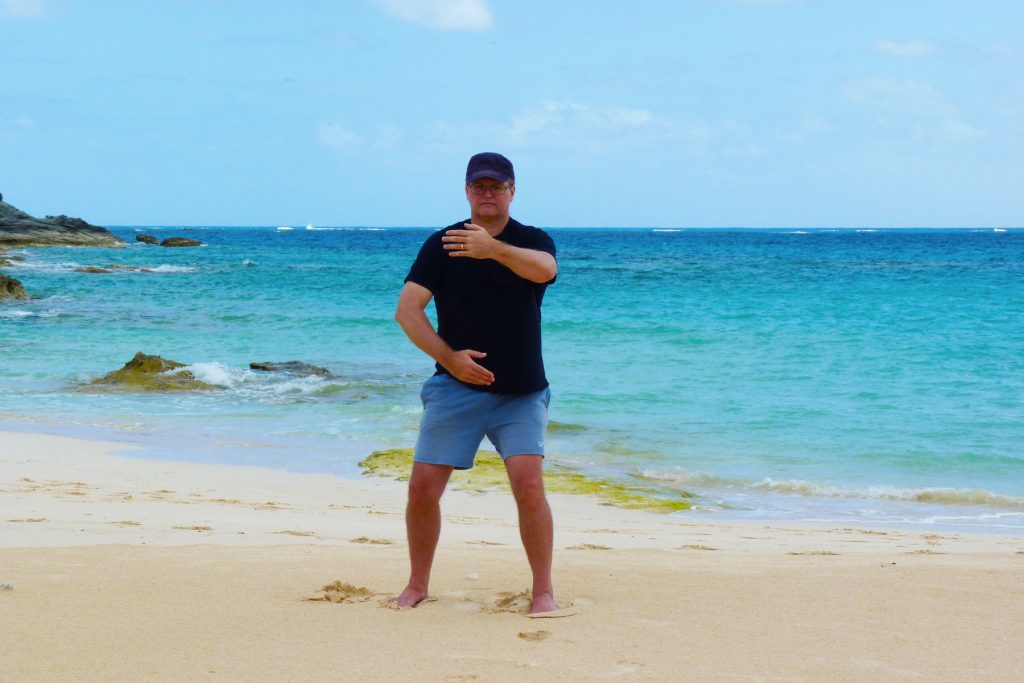
How Qigong and Neigong differ from Western forms of exercise
The internal arts of qigong and neigong develop the ability to use the mind to control and enhance the flow of your life force. Unlike western exercises, qigong and neigong do not focus primarily on muscles. They are much more concerned with the nerves and blood flow.
The Nervous System:
The nerves are one of the main links between the body and the mind and they are one of the main conduits of energy in the body. The soft continuous movements of qigong and neigong gently release the nervous system. This is even quite different from yoga which uses strong stretches to lengthen body tissue. Such strong stretching does not release the nervous system. You can have a strong, flexible body and still be tense.
By releasing the nervous system the body can let go of its habitual tension. The more the body is free of tension the easier it is for blood, lymph and energy to move around the body, and the more the joints and cavities of the body can open up. Most joint pain comes from a lack of space in the joints. Releasing the nervous system also improves your coordination and reflexes, and helps to calm the mind.
The Circulatory System:
Along with the nerves, the fluids of the body are the other primary conduit of energy in the body. The stronger your fluid flow is (including blood, lymph, sinovial, interstitial and cerebral spinal fluid), the stronger your energy and vitality.
The western view of the circulatory system tends to focus on the heart. This involves raising the heart-rate during exercise in order to keep the heart strong. In the internal arts the focus is on the entire circulatory system. Their gentle twisting and pulsing movements are designed to keep all of the blood vessels soft, springy and open, which allows the blood to flow more easily. Twisting the tissues and opening and closing actions (of the joints, cavities, blood vessels etc) move the body fluids through the vessels. This means that the heart does not have to do all of the work and does not have to strain. The heart along with all the other internal organs and the spine are also kept healthy by the gentle massage they get from Longevity Breathing techniques.
Each of the 16 neigong components enhances your circulation in different ways.
Mindfulness:
Another characteristic of the internal arts is that they fully involve the mind. They are about ‘making the body conscious’. This could not be further from the mindlessness of western exercise, consider the joggers you see wired into i-pods, or people on a treadmill watching television. One of the main benefits of being mindful of what you are doing is that it is much more interesting. The more you do qigong and neigong the more you find, and the more subtle your awareness of your body and mind becomes. People rarely stop qigong and neigong because they find them boring. The ability to go into your body makes it much less likely that you will hurt yourself, as you will be able to listen more carefully to your body during any activity or exercise. This ability also gives you an early warning system if something does begin to go wrong inside. The earlier you catch something the less of a problem it is.
Qigong and neigong also develop the ability to focus your attention inside and outside of yourself for long periods of time without becoming tired or distracted. An important aspect of longevity practices, from the Daoist point of view, is that they keep your mind clear and present right up to your last day. Living well is much more important than simply living a long time.
What to look for:
There are literally thousands of different internal practices, many of which were designed for specific purposes. Most of them are safe, some are dangerous. The safest, and often the most beneficial, focus on the downward flow of energy in the body for the first few years, as we do in Fundamentals. It is the downward flow that opens and heals the body and releases blocked energy. When choosing a qigong or neigong the best are those that have been tested over a very long period of time. Be sure to ask what it was designed to do, whether it is a complete system and how long it has been around (several centuries is traditionally considered the acceptable minimum). There are many people teaching partial systems and these can destabilise your body, energy and mind. A complete system will strengthen and balance all of the major energy flows in the body.

